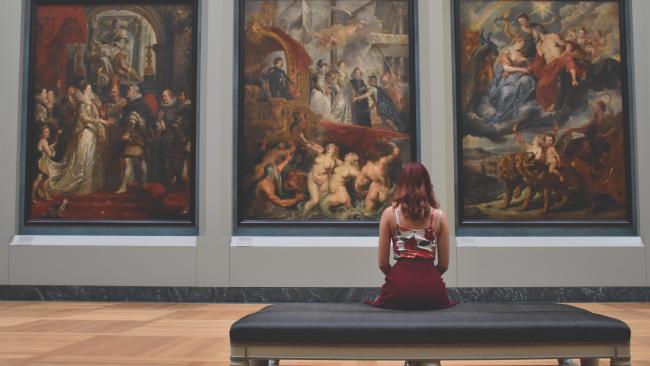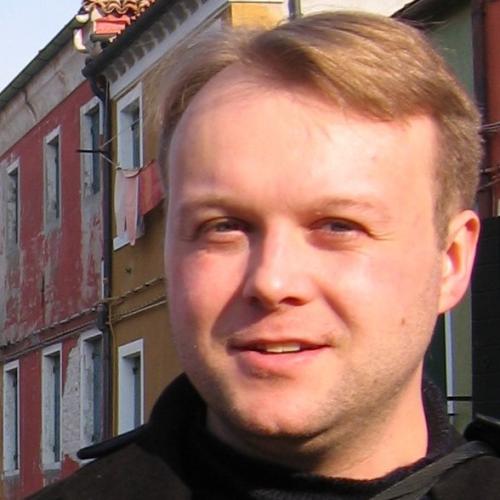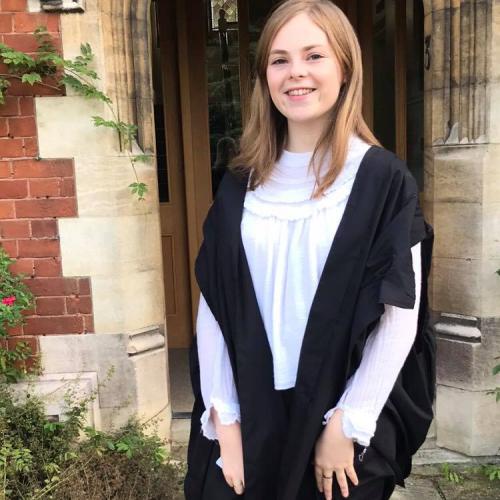
History of Art
- Number of students per year: up to two
- Typical offer: A*AA or equivalent
- Essential subjects: none
- Useful subjects: History of Art, History, English, Modern Languages, Classics, Art, and Design
Our distinctive commitment to the visual arts makes Jesus College an excellent base for studying History of Art.
Visitors are invariably struck by the eye catching juxtapositions of historic buildings with modern works of sculpture, from Barry Flanagan’s Bronze Horse at the centre of the 16th century First Court to Eduardo Paolozzi’s Daedalus on Wheels outside the chapel’s 12th century chancel.
Over twenty permanent sculptures across the College constitute Cambridge’s most important sculpture park. This tradition has been carried forward with the Quincentenary Library, where Anthony Gormley’s Learning to See welcomes readers to the first floor.
Jesus is also within walking distance of the Fitzwilliam Museum and Kettle’s Yard. We have a resident Fellow in History of Art, Dr Donal Cooper, a specialist in Italian art and architecture. The College’s library has excellent History of Art holdings and Dr Cooper works closely with the students and librarian to ensure that library stocks are kept up to date and meet students’ needs.
Our permanent sculpture displays are supplemented every two years by our very own summer Biennale called Sculpture in the Close. In addition, Jesus hosts more frequent temporary exhibitions of prints and paintings.
The College's own collection of paintings and works on paper, curated by Professor Rod Mengham, is also very extensive, especially for the modern era, and students are able to choose artworks to hang in their own rooms. The visual arts stand at the heart of College life, and Jesus art historians have many opportunities to get involved in display and curating.
Requirements
Our typical conditional offer is for A* and two A grades at A-Level or equivalent.
We're looking for candidates with a strong commitment and a real enthusiasm for History of Art, regardless of whether they've studied the subject at school.
We're looking for individuals with the potential to develop excellent visual analysis skills, who are keen to look long and closely at artworks and buildings to better understand them, and who relish the chance to interpret art within its complex historical contexts, whether political, social, intellectual, or religious.
Many choices of subjects at A-Level or equivalent offer a good grounding for studying History of Art, and we're keen to encourage applications from interested students with a wide range of backgrounds. Studying History of Art at A-Level is not a requirement and doesn't necessarily give someone an advantage. Mathematics and science subjects are acceptable if accompanied by one or two arts A-Levels. Subjects should be primarily academic.
We welcome applications from students with other qualifications comparable to A-Level, such as Scottish Certificate of Sixth Year Studies, the International Baccalaureate, and other school leaving examinations.
Written assessment
All applicants who are shortlisted for interview will need to sit a one hour written test. This assesses your aptitude for visual analysis and written description by asking you to comment on images of artworks.
Your performance in the test won't be considered in isolation, but will be taken into account alongside the other elements of your application. See the University undergraduate History of Art pages for more information.
Interviews
In 2023-24, we’ll be interviewing shortlisted applicants virtually, with interviews taking place in December.
The interview process aims to assess your intellectual ability, potential, and commitment to the subject. Candidates are typically interviewed by at least three subject specialists, including the Director of Studies, and total contact time will be between 35-50 minutes in total. This could be in a single interview, or in two separate interviews. Further details will be made available to candidates closer to the time.
During the interview you may be shown and asked to discuss images of works of art and architecture. This aspect of the interview is not intended as a narrow identification test but rather to facilitate broader discussion of how we can read and respond to visual material. The interviewers will be looking for intellectual potential, visual sensitivity, and enthusiasm for the subject rather than specialist knowledge.
Find out more about the interview process on the University website.
Written work
We will ask you to send in two pieces of written school work ahead of your interview. They can be essays or coursework in any humanities subject, and of any length, and ideally, they will have been marked by your teachers. These allow us to assess what academic writing you've produced as part of your school work, and what kind of feedback you've received from your teachers. Please keep copies of the work you send so that you can reread them before your interview.
Deferred and post A-Level entry
We'll consider applications from those who have already achieved A*AA or equivalent at A-Level, you'll need to go through the usual competitive process with other applicants. We'll also consider second time applicants without prejudice.
Find out how to apply to study at Jesus.

